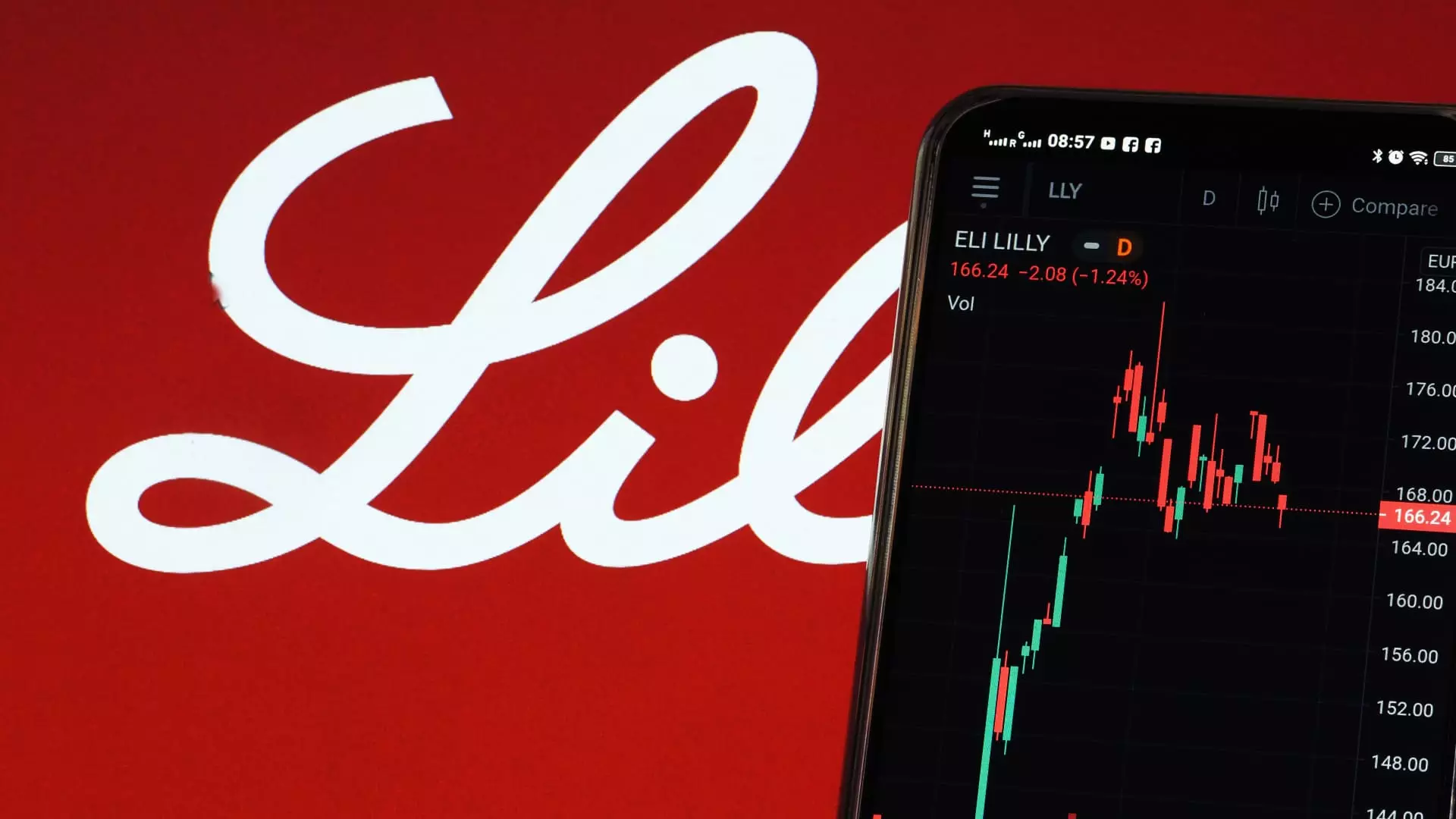JPMorgan recently shared its revised outlook on biopharmaceutical companies, suggesting that some members within this sector may experience significant growth over the upcoming year. After a tumultuous period characterized by extreme highs and lows for various firms, the investment bank positions Eli Lilly as the frontrunner among its recommended stocks. Analysts like Chris Scott have taken a closer look at the current landscape, identifying strong potential in companies such as Gilead Sciences and Bristol Myers Squibb as well.
Despite the overall performance of the US Large Cap Biopharma sector surpassing the S&P 500 this year, Scott emphasizes that sector valuations remain startlingly low compared to the broader market. This observation raises questions about investor sentiment and the perceived potential of biopharma stocks compared to other industries. Notably, Scott highlights a notable divergence in investor confidence, favoring companies with clear and compelling growth narratives over those plagued by uncertainty or volatile forecasts.
This year has seen the Nasdaq Biotechnology Index (NBI) reclaim some of its lost ground, boasting a gain of 6.5% thus far. This resurgence is particularly striking following a disappointing performance last year, during which the NBI fell by 3%. In contrast, major market indices like the S&P 500 and the tech-heavy Nasdaq Composite enjoyed gains of over 23% and nearly 29%, respectively. Such disparities indicate not only the volatility found within the biopharma sector but also the drastic fluctuations in investor trust towards specific companies.
Eli Lilly stands out significantly. The company’s exceptional growth trajectory, notably from its innovative weight-loss drug offerings such as Mounjaro and Zepbound, is seen as a major catalyst for future stock price appreciation. Scott predicts that as access and production capacity expand, prescriptions for these treatments will escalate, thereby bolstering the company’s stock performance throughout the year.
Looking ahead, Scott anticipates that Eli Lilly’s experimental obesity drug orforglipron will emerge as a game-changer within the biopharma landscape. Set to release critical clinical trial data this upcoming quarter, orforglipron has the potential to launch as early as mid-2026 if results are favorable. If this drug meets or exceeds expectations, it could serve as a significant boon to Eli Lilly’s portfolio, further establishing its prominence in the market.
However, it is essential to acknowledge the challenges Eli Lilly faced in the fourth quarter, where demand for Zepbound and Mounjaro could not fulfill expectations amid decreased revenue figures. How the company navigates these hurdles will be crucial to maintaining investor confidence moving forward.
Bristol Myers Squibb presents an interesting case as well, as it remains on JPMorgan’s list of favored stocks despite a 2.4% decline year to date. Analysts, while recognizing the robust growth drivers within Bristol Myers’ portfolio, noted that the company’s fourth-quarter earnings fell short of expectations. The decline often attributed to more mature product lines and unfortunate currency fluctuations raises concerns about the firm’s future trajectory.
Nonetheless, Bristol Myers holds promise with ongoing developments in treatments for schizophrenia and Alzheimer’s diseases. The inclusion of innovative products and strategic cost-cutting measures, aimed at boosting profitability, could play a vital role in enhancing share performance.
Another key player, Gilead Sciences, is garnering attention due to its promising pipeline aimed for 2025. Analysts believe that Gilead’s established HIV portfolio and its commitment to stringent expense management bode well for its financial health. The company stands out as one with the potential for solid returns, making it an attractive investment in a market that often seems fickle.
In contrast, companies like Regeneron and Merck have recently lost favor among investors. With Wilson Chang, their market outlook seems uncertain at best. The differing perceptions of these biopharma powhouses emphasize the dynamic nature of market sentiment and the critical impact of ongoing performance evaluations.
The biopharma landscape is complex and filled with both opportunities and risks. As JPMorgan highlights, Eli Lilly, Bristol Myers Squibb, and Gilead Sciences are well-positioned for potential growth; however, investor diligence is necessary. The fluctuating fortunes of these companies remind us that while innovation is crucial, market perception and strategic execution typically determine success or failure in this competitive sector. As new drugs emerge and existing products evolve, the biopharma field will continue to demand scrutiny and analysis to understand its shifting dynamics.

